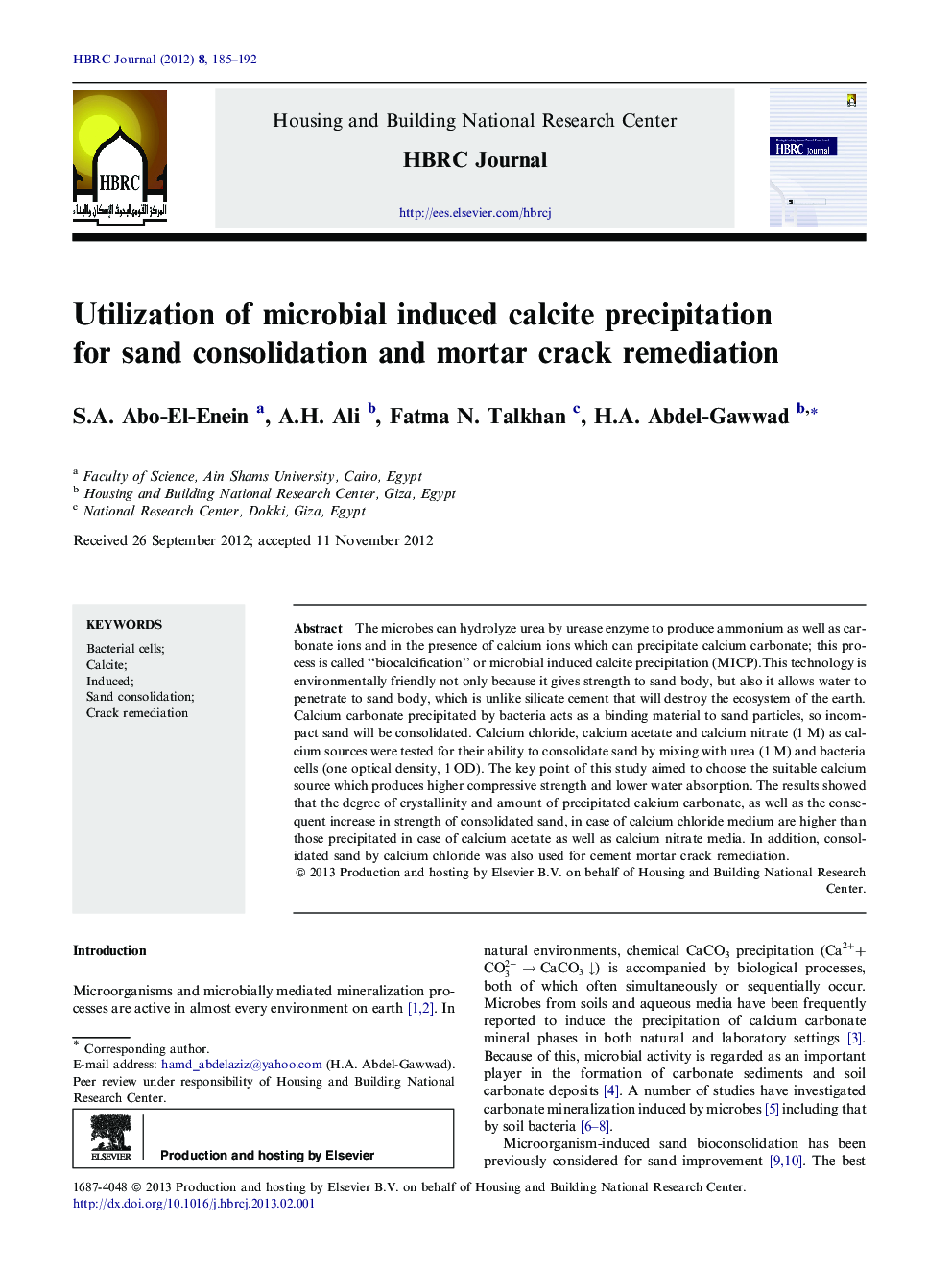| Article ID | Journal | Published Year | Pages | File Type |
|---|---|---|---|---|
| 274719 | HBRC Journal | 2012 | 8 Pages |
The microbes can hydrolyze urea by urease enzyme to produce ammonium as well as carbonate ions and in the presence of calcium ions which can precipitate calcium carbonate; this process is called “biocalcification” or microbial induced calcite precipitation (MICP).This technology is environmentally friendly not only because it gives strength to sand body, but also it allows water to penetrate to sand body, which is unlike silicate cement that will destroy the ecosystem of the earth. Calcium carbonate precipitated by bacteria acts as a binding material to sand particles, so incompact sand will be consolidated. Calcium chloride, calcium acetate and calcium nitrate (1 M) as calcium sources were tested for their ability to consolidate sand by mixing with urea (1 M) and bacteria cells (one optical density, 1 OD). The key point of this study aimed to choose the suitable calcium source which produces higher compressive strength and lower water absorption. The results showed that the degree of crystallinity and amount of precipitated calcium carbonate, as well as the consequent increase in strength of consolidated sand, in case of calcium chloride medium are higher than those precipitated in case of calcium acetate as well as calcium nitrate media. In addition, consolidated sand by calcium chloride was also used for cement mortar crack remediation.
